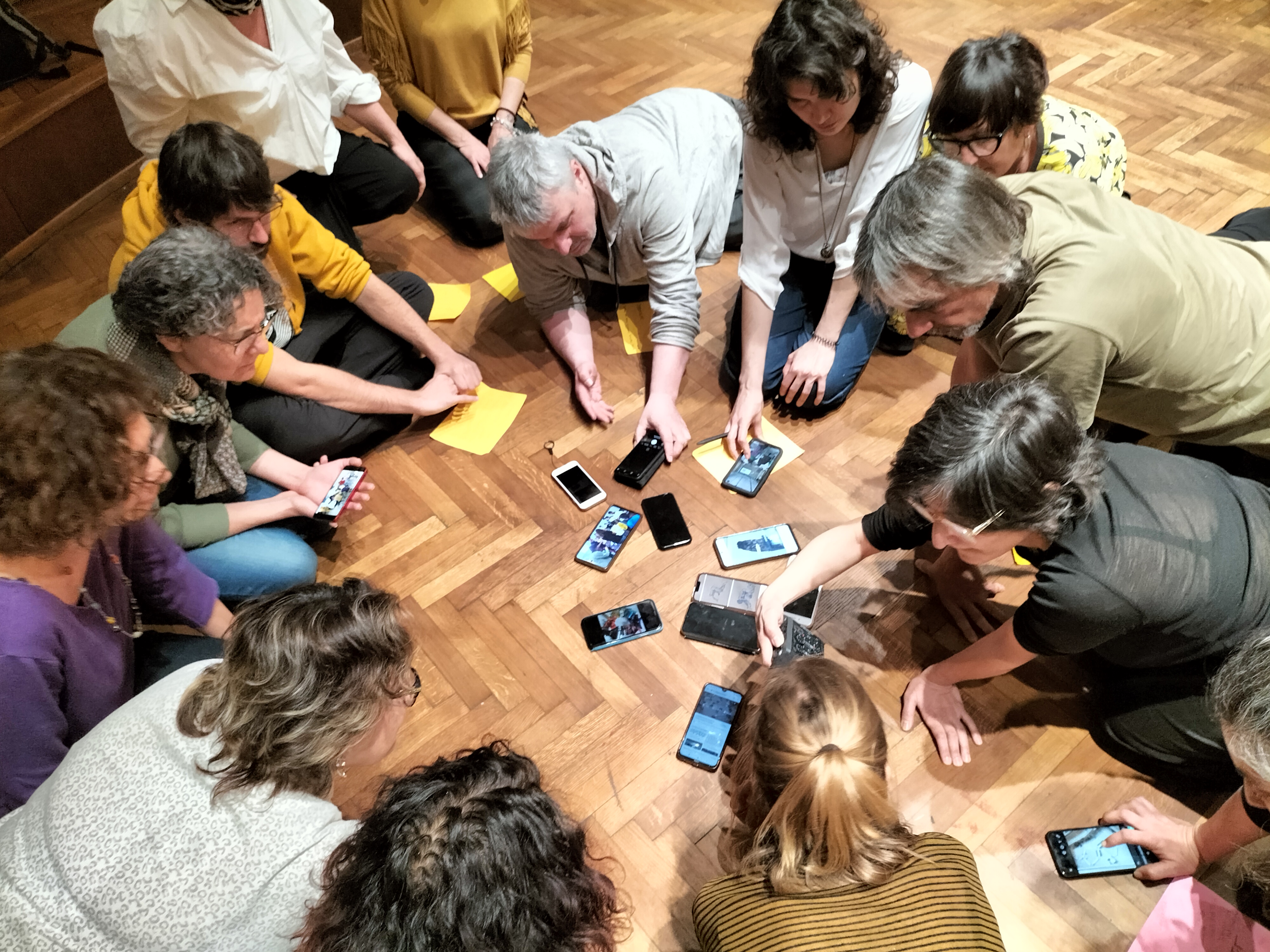
Today, everybody has a cellphone. There are more mobile telephones than humans on the planet. They’re present and we use them in our immediate surroundings, and this usage is characterized by the capturing of reality and everyday life without reflection, publishing of photos and videos in social networks, shaky video quality and a vertical format. All this is enormously popular and appeals to all age groups. There are few inhibitions preventing cellphone users from taking photos or videos or recording sounds with cellphones, and access to potential creative activity is also unhampered.
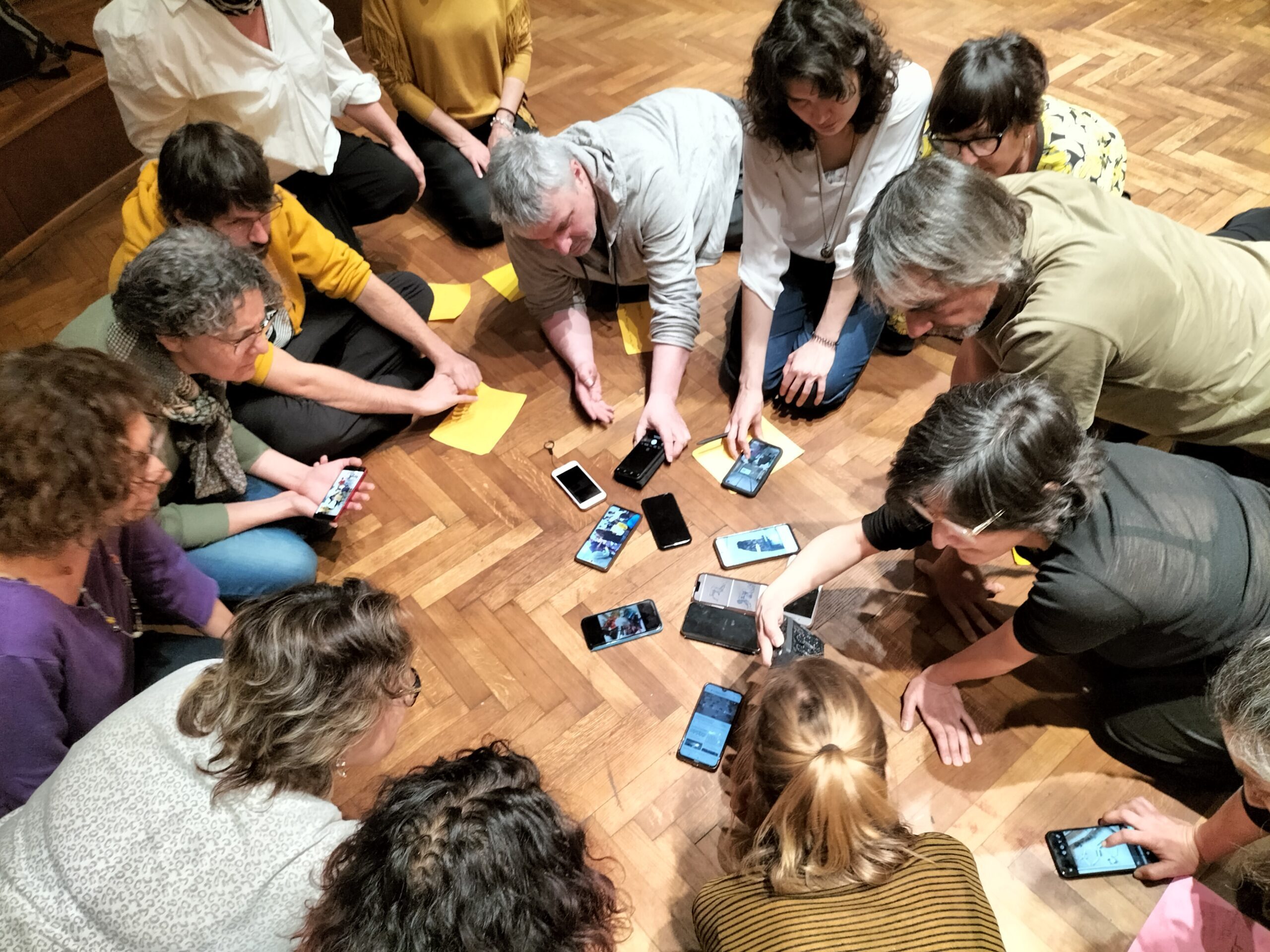
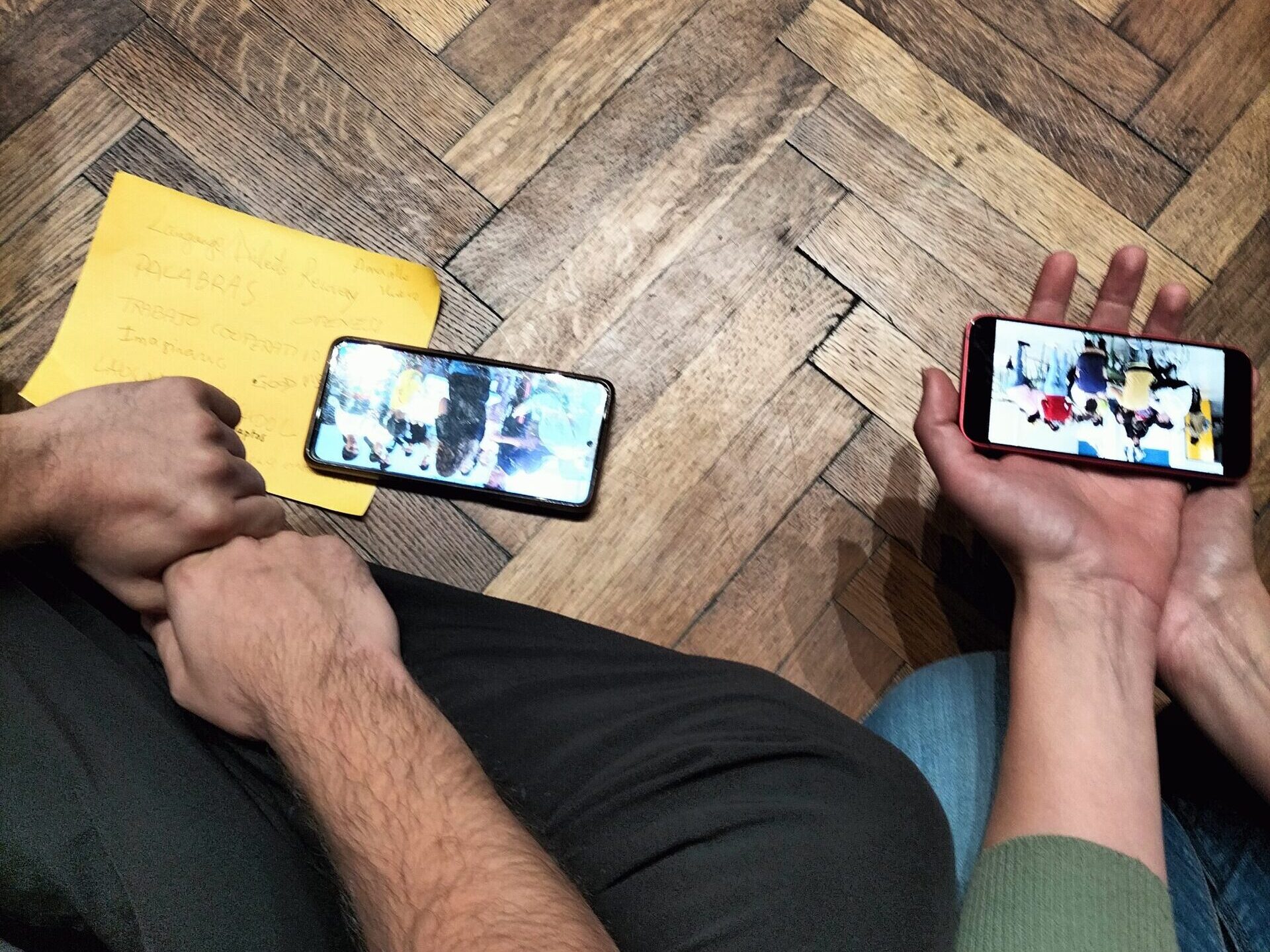
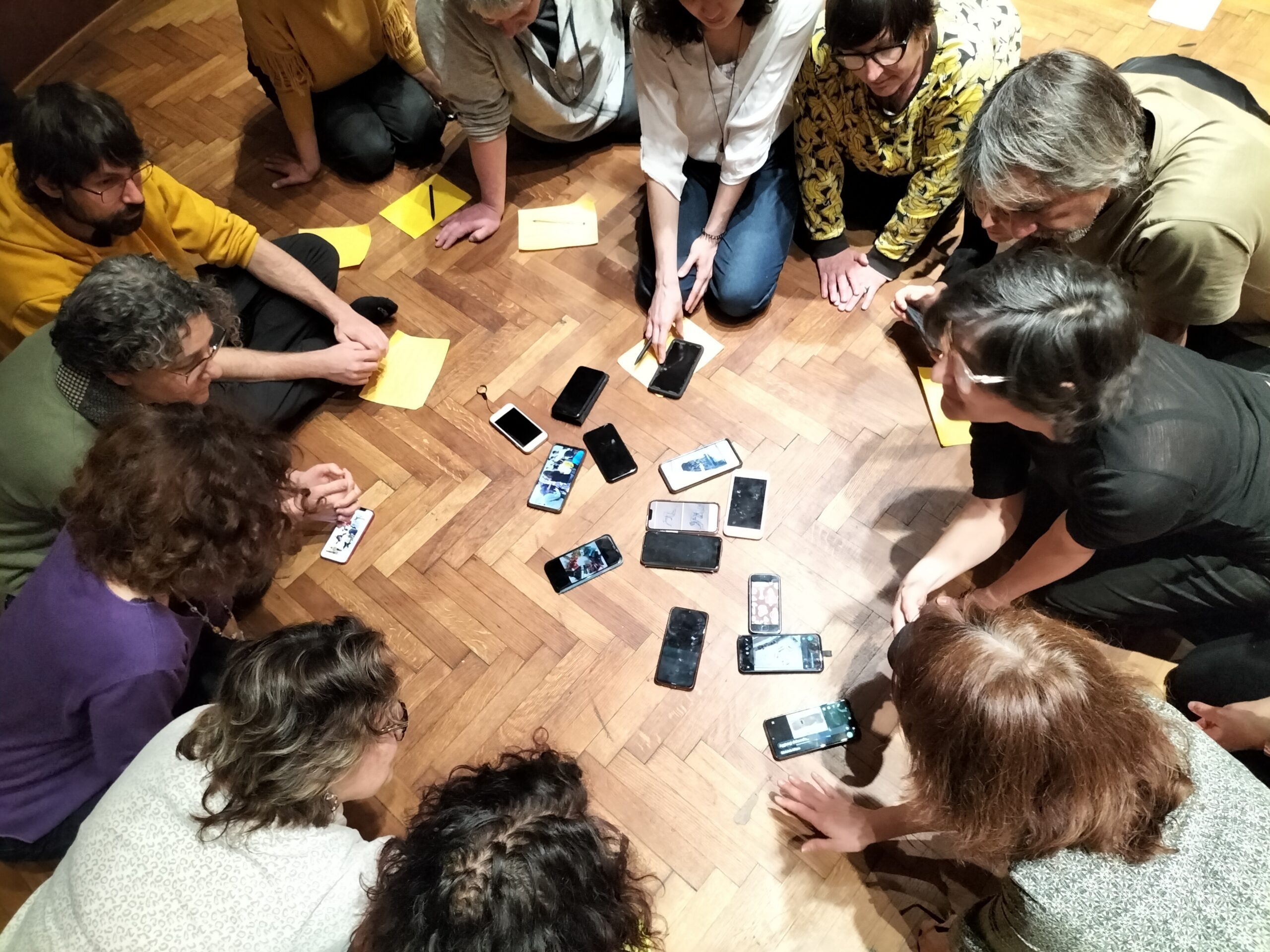
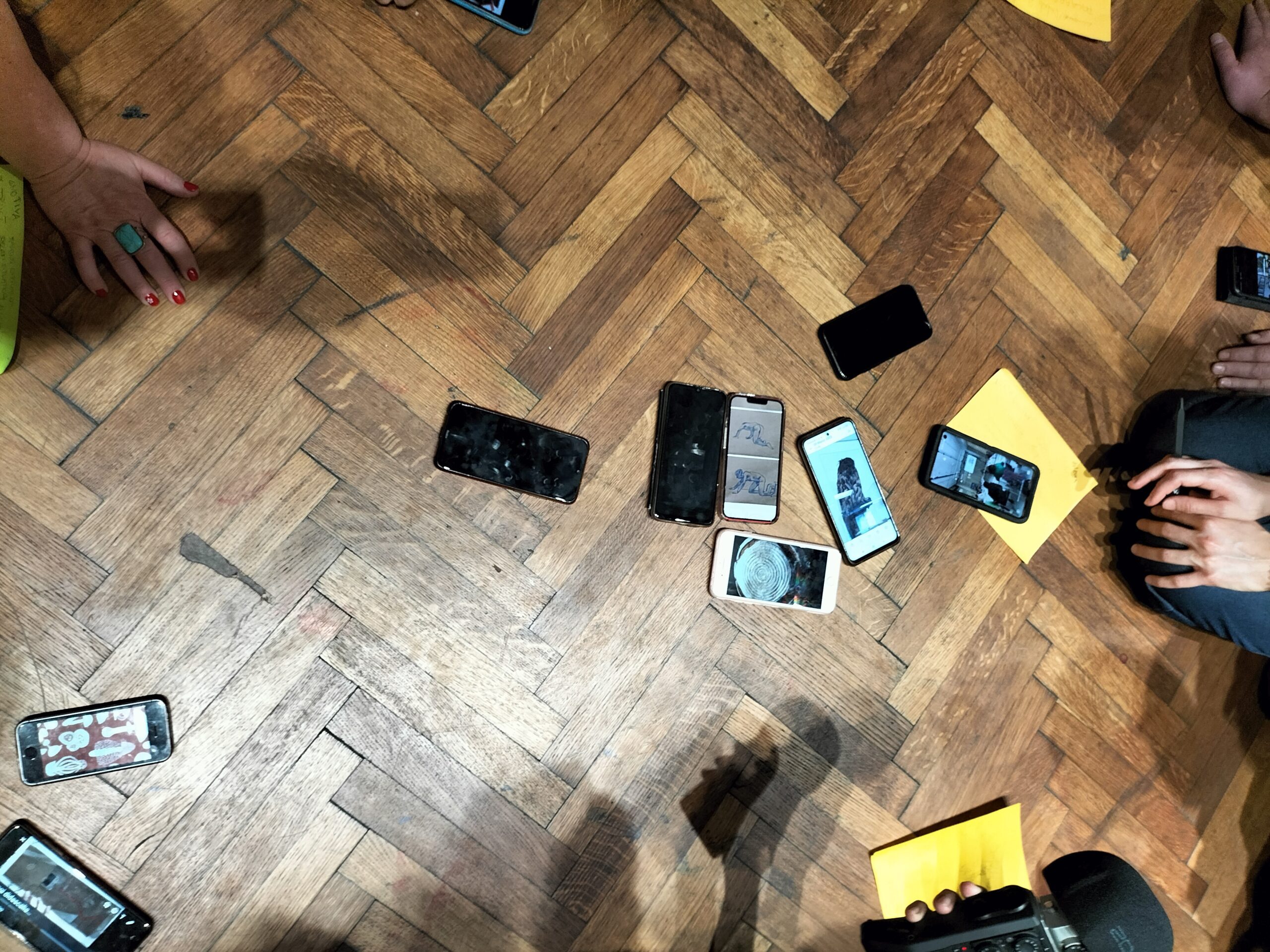
Arts class
Experiential Learning: Participants engage in practical, real-world activities using their cellphones, actively applying concepts and skills rather than passively receiving information. This approach enhances understanding and retention.
Multimedia Integration: The incorporation of various media formats, including photos, videos, text, and sound, provides a multimedia learning experience. This approach caters to different learning styles and allows participants to explore storytelling through multiple channels.
Reflection: The inclusion of reflection periods allows participants to analyze and discuss their experiences. This reflective component promotes metacognition, helping participants understand their own learning processes and outcomes.
Interdisciplinary Approach: The workshop appears to have an interdisciplinary orientation, drawing on elements from technology, arts, communication, and potentially other fields. This approach encourages participants to integrate knowledge and skills from various disciplines.
Accessibility: The workshop’s requirement of only a cellphone ensures accessibility, minimizing the need for specialized technical equipment. This approach allows a broad range of participants to engage in the activities.
Iterative Practice: The suggestion to repeat exercises with different genres indicates an iterative approach. This repetition allows participants to reinforce their learning, refine their skills, and experience the group dynamics of storytelling across various contexts.
Exquisite Corpse Technique: The use of the exquisite corpse technique, a surrealistic game, adds an element of unpredictability and creativity to the collaborative experience. Each participant adds their piece to the narrative without knowing the complete context, fostering spontaneity and surprise in the storytelling process.
Genre Exploration as a Group: The definition and exploration of different genres are collaborative activities. Participants collectively decide on a genre, take photos that fit the chosen theme, and contribute to the creation of a visual arrangement in that genre.
Spontaneity in Decision-Making: The collaborative nature of the experience is heightened by the spontaneous decision-making process. Participants decide when to react, add their chosen photos to the narrative, and contribute to the evolving story without a predetermined order.
Adaptability and Flexibility: The collaborative environment encourages adaptability and flexibility. Participants need to adapt their contributions to fit the evolving narrative, responding creatively to the elements introduced by others.
Define a genre (a pattern, a color, architecture, nature, emotion etc.). Each participant uses their cellphone to take approximately five photos of their surroundings that fit the chosen genre. The participants gather at the workspace. The head of the workshop places their cellphone, which has a photo relating to the chosen theme, on the work surface, thereby starting a visual narrative. Then the next steps are explained:
The workshop participants are then asked to add their own photo to the image on the work surface.
The participants gather at the workspace. The head of the workshop begins the narrative by selecting a photo from their own cellphone, then places the cellphone on the work surface. The head makes up a sentence that fits the image and speaks it as a voiceover. This sentence shouldn’t be a simple description of the image. The other workshop participants are then asked to continue the narrative with their own photos and sentences by adding them one by one to the image on the work surface and the narrative that has been started.
The choice of evaluation methods should align with the workshop’s objectives and the desired outcomes. It’s essential to balance constructive feedback with acknowledgment of participants’ efforts and creativity. Additionally, involving participants in the evaluation process fosters a sense of ownership and encourages ongoing reflection on their learning journey.

